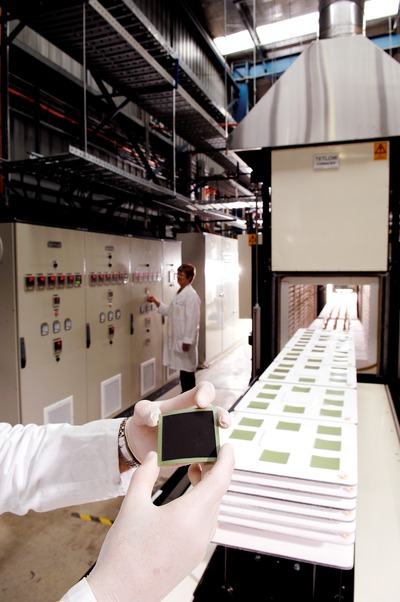Fuel cell technology to cut carbon emissions
The AIM and ASX listed fuel cell company Ceramic Fuel Cells’ (ASX/AIM: CFU) BlueGen gas-to-electricity generator was recently installed in one of the UK’s low-carbon homes. The BlueGen unit uses patented fuel cell technology to provide electricity from widely available natural gas. A fuel cell is an electricity generator that converts gas into electricity and heat through an electrochemical reaction, without combustion or noise.
The unit has been installed in a four-bedroom family home in house builder Crest Nicholson’s Noble Park development on the outskirts of Epsom, Surrey. “This is a real first for the UK in terms of introducing fuel cell technology into new homes, and the fact that the technology is now at a point where people can effectively use it in their living environment is something that will bring real consumer benefits,” said Stephen Stone, Chief Executive, Crest Nicholson.
The Crest Nicholson low-carbon home in the UK demonstrates how new houses can meet the energy-efficiency levels of the Code for Sustainable Homes Level 4, cutting carbon emissions by 44% from 2006 Part L Building Regulations levels. In 2016 this requirement for all homes sent to planning increases to ‘zero carbon’, meaning the building fabric of the home and on-site power and heat generation must cut emissions by at least 70% from 2006 levels, equivalent to zero net carbon emissions from regulated energy, which is that used for heating, hot water, lighting and building (services) consumption, over the course of a year.
“The technology works best in energy-efficient homes that require very low levels of heating, and this is exactly the case with the AIMC4 homes at Epsom. Not only that, but as part of this pioneering project we will also be carrying out an intensive program of post-occupancy evaluation, which will provide solid data to help us understand how our customers react to the benefits of fuel cell technology,” states Nicholson.

The BlueGen technology has also been tried and tested closer to home - in the Ausgrid smart home in Sydney’s Olympic suburb of Newington. Over 18 months from November 2010-October 2011, BlueGen generated average of 28 kWh of electricity per day, plus hot water - this means enough electricity for two average homes per year. BlueGen cut carbon emissions by 65%, saving 6.9 tonnes of carbon.
BlueGen, like other distributed generators, needs a net meter to be able to measure the amount of electricity exported back to the grid. If the site does not have a net meter, one must be installed. If the site already has a net meter, typically it must be reprogrammed to correctly measure the power export. For consumers to be able to receive the benefits of distributed generation, it must be simple and quick for them to install distributed generation and connect to the power grid.
Each unit can be installed by a qualified and trained electrician and plumber in less than a day. The BlueGen unit needs to be physically installed at the site by a licensed and trained plumber, and connected to the grid by a licensed and trained electrician, according to CFU. The electrician then provides a certificate of electrical safety to the customer. The customer, retailer and the network provider need to complete a number of other steps to get the system up and running. “This process is unnecessarily cumbersome, long and inefficient. The connection process can be dramatically simplified and shortened by removing the monopoly on network companies installing or programming meters,” according to CFU. The company suggests that any electrician who has the appropriate grid-connect certification should be able to install or program a meter. “Naturally they would need to cooperate with the network company and notify them of the work done, but this is not difficult or complex. At the truly small scale, eg, 2 kW, the network company is not adding any value or unique technical skill to the connection process. There is nothing needed from the network company which could not be done by a suitably trained and qualified third-party service provider.”
CFU has products installed and operating with customers in nine countries: Germany, the UK, Switzerland, The Netherlands, France, Italy, Japan, USA and Australia. In Australia, the BlueGen units are available for commercial customers through the company’s distributors, Hills Solar and Harvey Norman Commercial division.
Electric school buses: healthier and more cost-effective?
In the US, where many school buses are older diesel models, policymakers can be unwilling to...
Wall of solar for German factory
When a German manufacturer was looking for a sustainable energy solution, it decided against...
What Australia thinks about the energy transition
A CSIRO survey has canvassed more than 6700 people in all states and territories, across capital...







